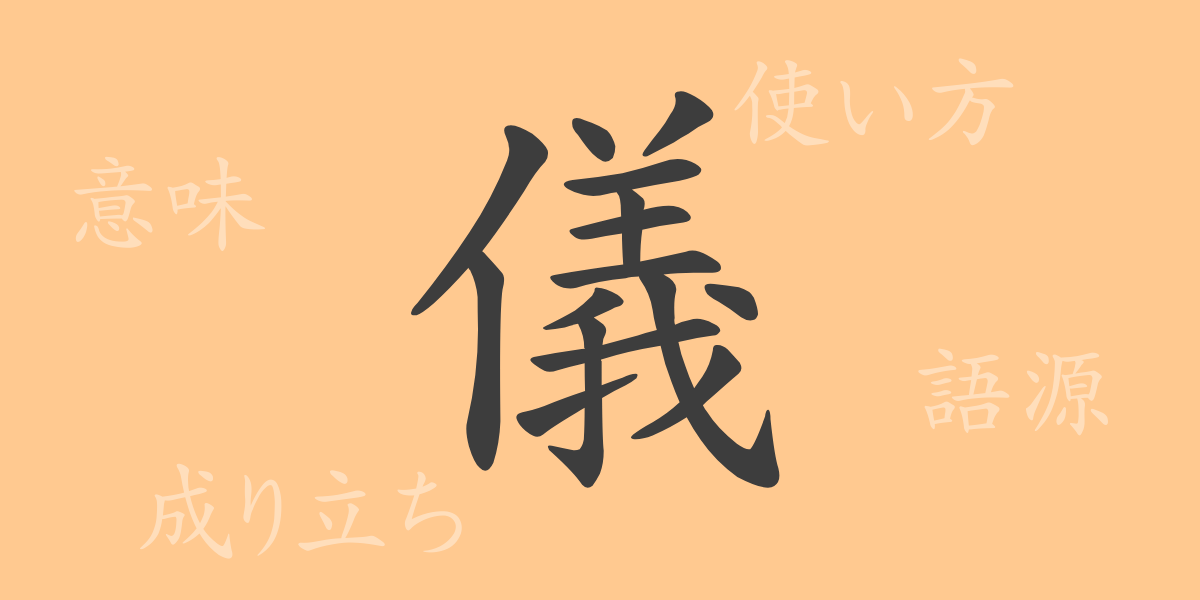The beauty of the Japanese language is reflected in its complex and rich writing system. Each kanji character has its own history and meaning, reflecting deep aspects of culture and language. The kanji “儀” (gi), one of the common-use kanji in Japanese, is closely related to our daily lives. This article delves deeply into this fascinating kanji, from its origin to its various uses.
Origin of the Kanji “儀” (語源)
The kanji “儀” (gi) is derived from ancient Chinese pictographs, originally meaning “a tool for showing etiquette.” Over time, the character evolved to represent abstract concepts such as etiquette and rituals. The kanji culture transmitted from China was embraced in Japan, and “儀” (gi) gained new meanings within Japanese culture and language.
Meaning and Usage of “儀” (gi)
The kanji “儀” (gi) refers to the importance of formality and procedures, or ceremonies and events related to this. It is also used to indicate the state or condition of things. In Japan, it is widely used to describe important social events such as weddings and funerals, as well as to signify the formal execution of certain actions.
Reading, Stroke Count, and Radical of “儀” (gi)
How is the kanji “儀” (gi) read in Japanese, and what is its structure?
- Reading: The on-yomi (Chinese reading) is “ギ” (gi); there is no kun-yomi (Japanese reading).
- Stroke count: 15 strokes in total.
- Radical: いとへん (いとへん, ito hen), meaning thread.
Idioms, Proverbs, and Expressions Using “儀” (gi)
There are many idioms, proverbs, and expressions in Japanese that include “儀” (gi). Here are a few examples:
- 儀式 (ぎしき, gishiki): A ceremony that follows specific procedures.
- 儀礼 (ぎれい, girei): Courteous behavior.
- 格式張る (かくしきばる, kakushiki baru): To be overly concerned with formality.
These words are deeply rooted in Japanese life and spirituality, conveying culture through language.
Summary on “儀” (gi)
The kanji “儀” (gi) symbolizes the Japanese culture that values etiquette and formality from its formation to the present day. This kanji, which holds more than just its literal meaning, continues to play an important role in the lives of Japanese people, and its usage will remain unchanged in the future. We hope this article has helped you deepen your understanding of the rich history and meaning of “儀” (gi).

























